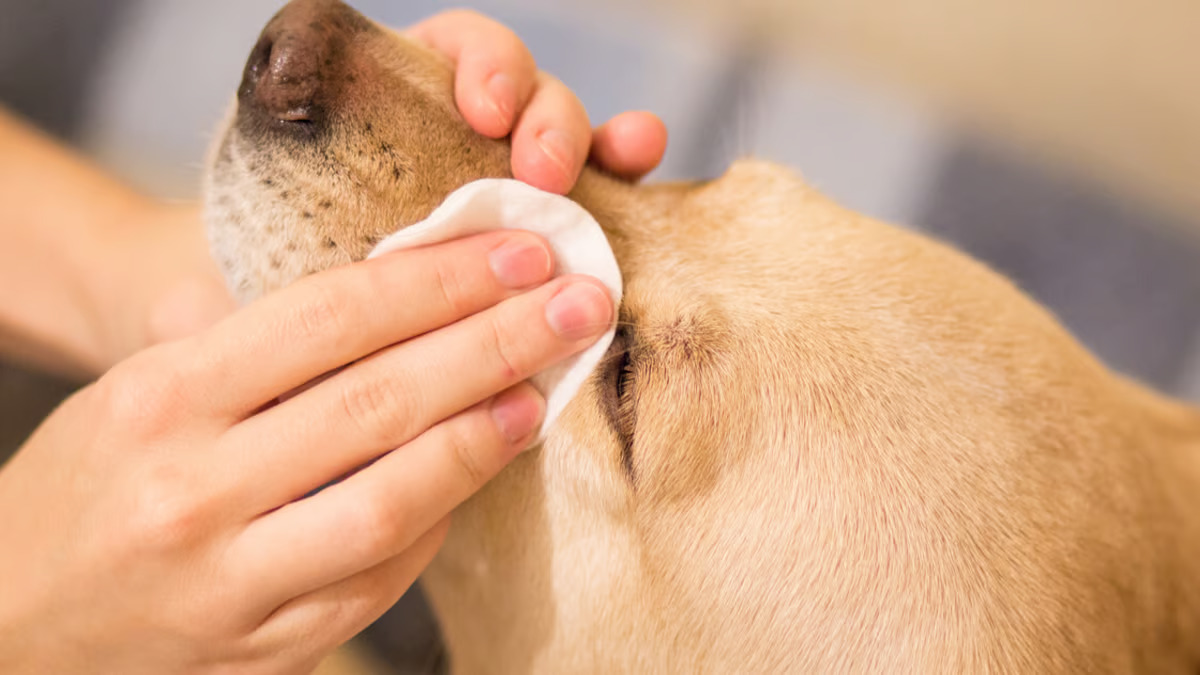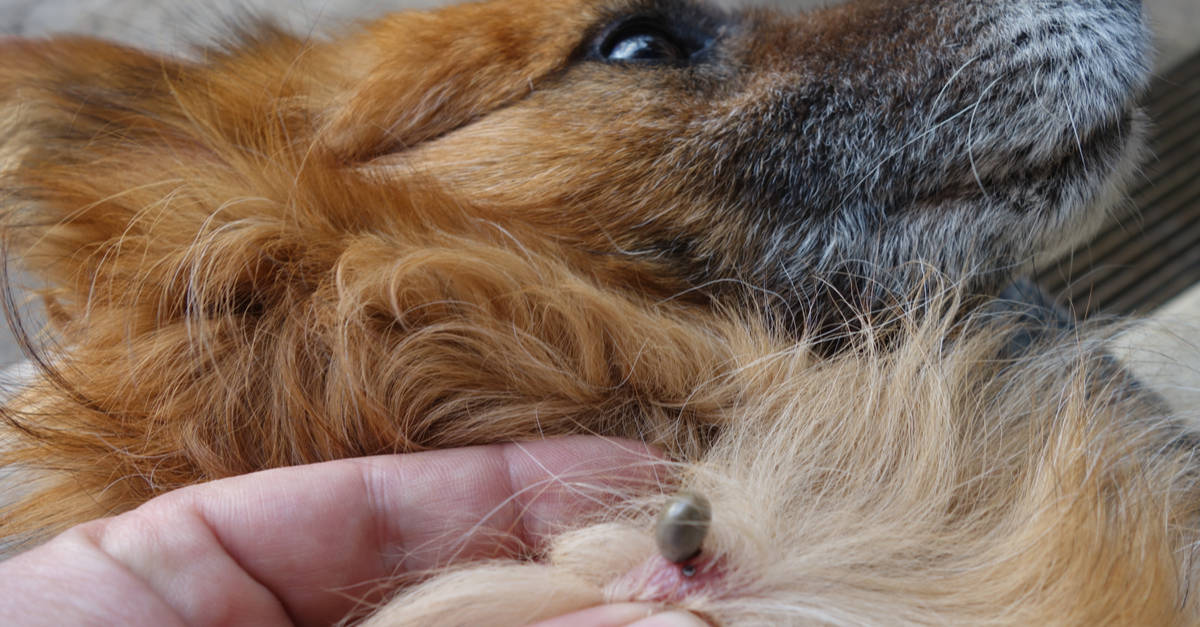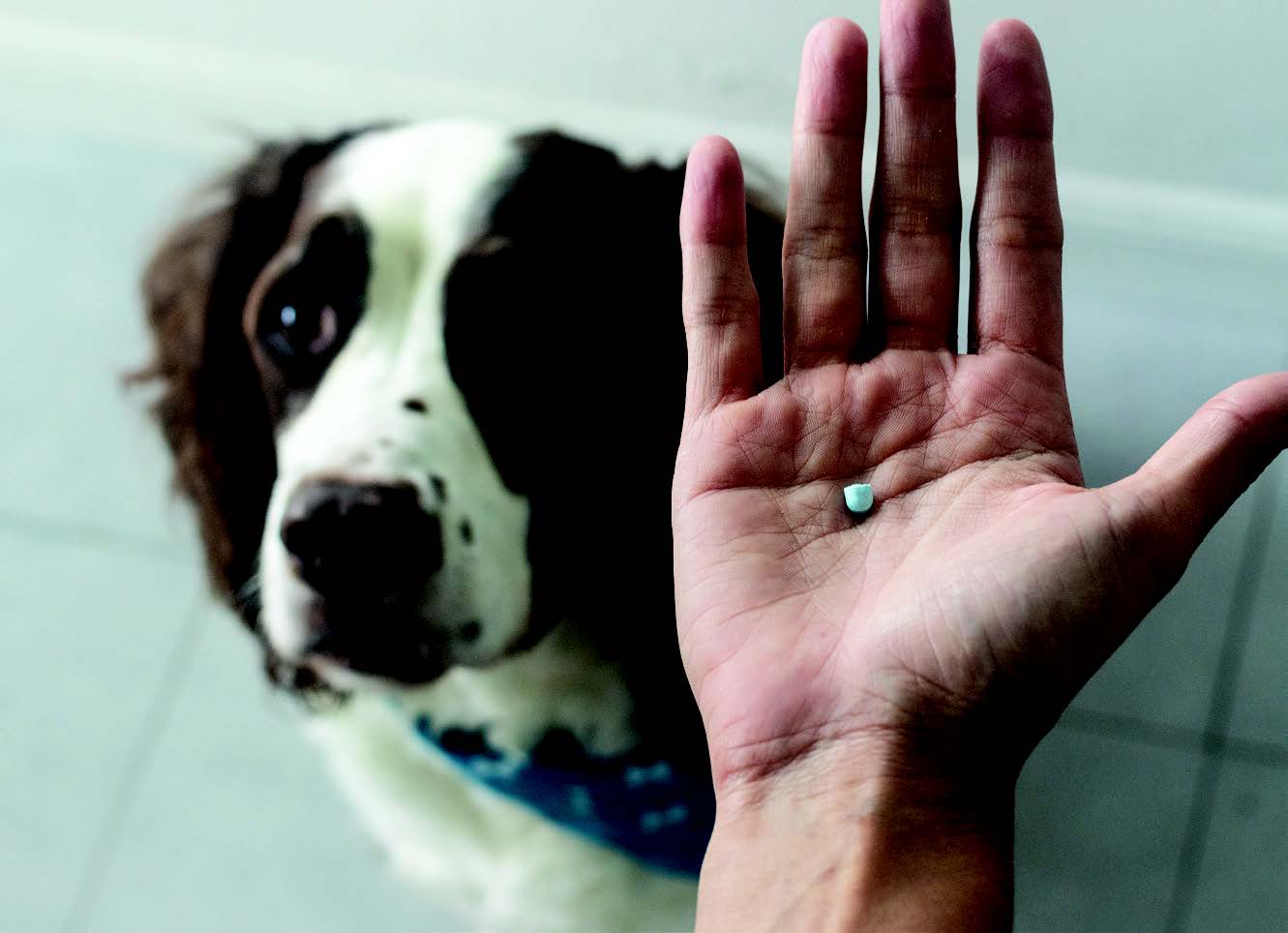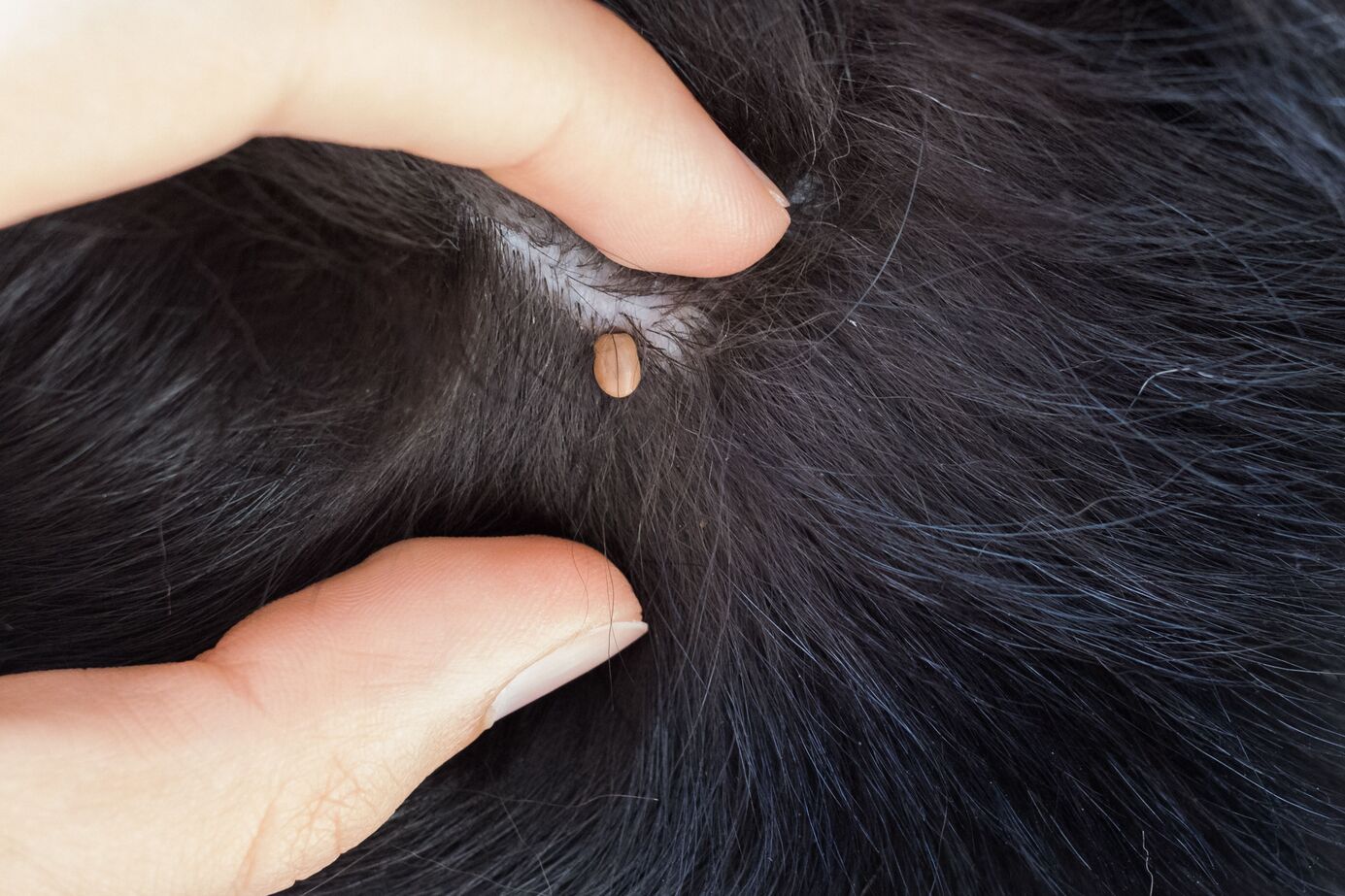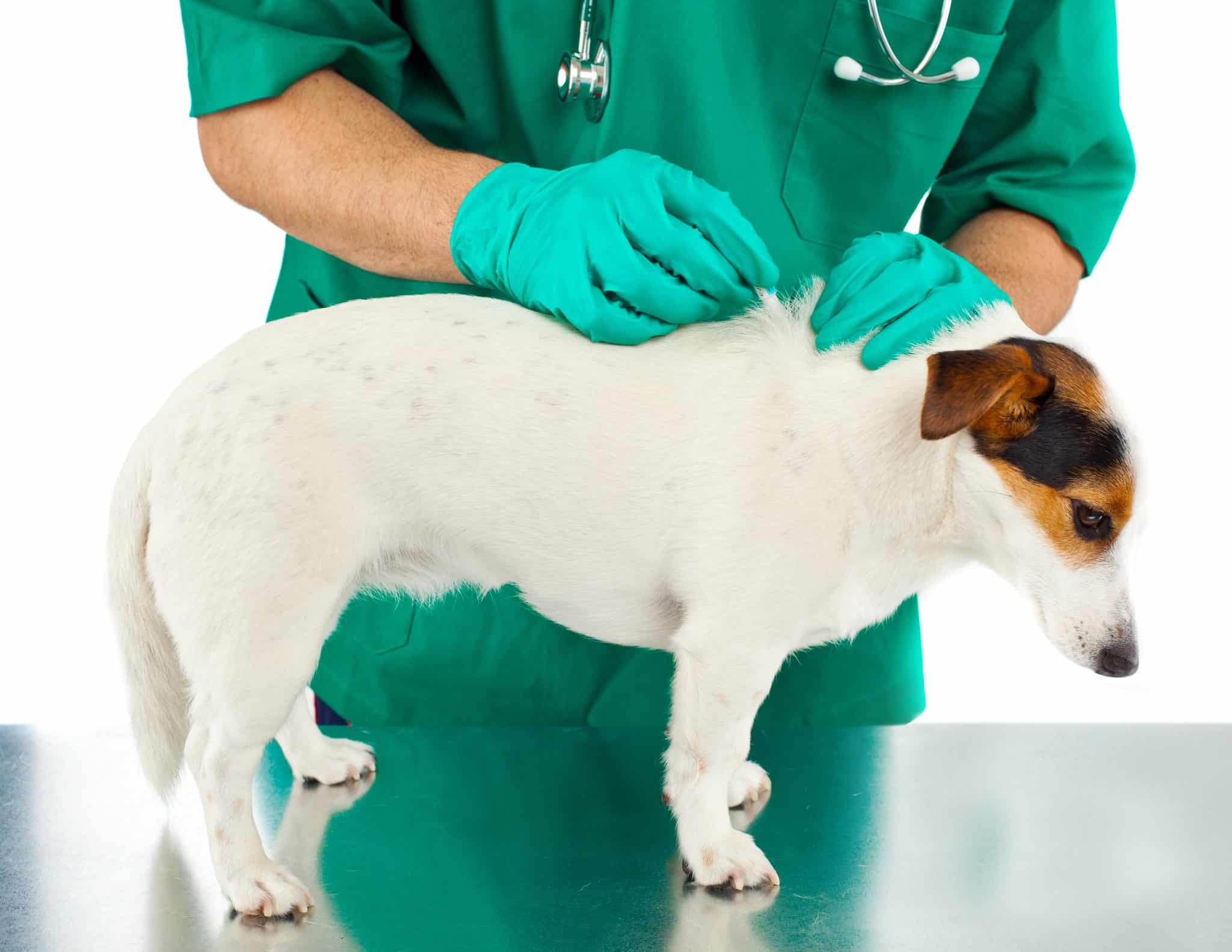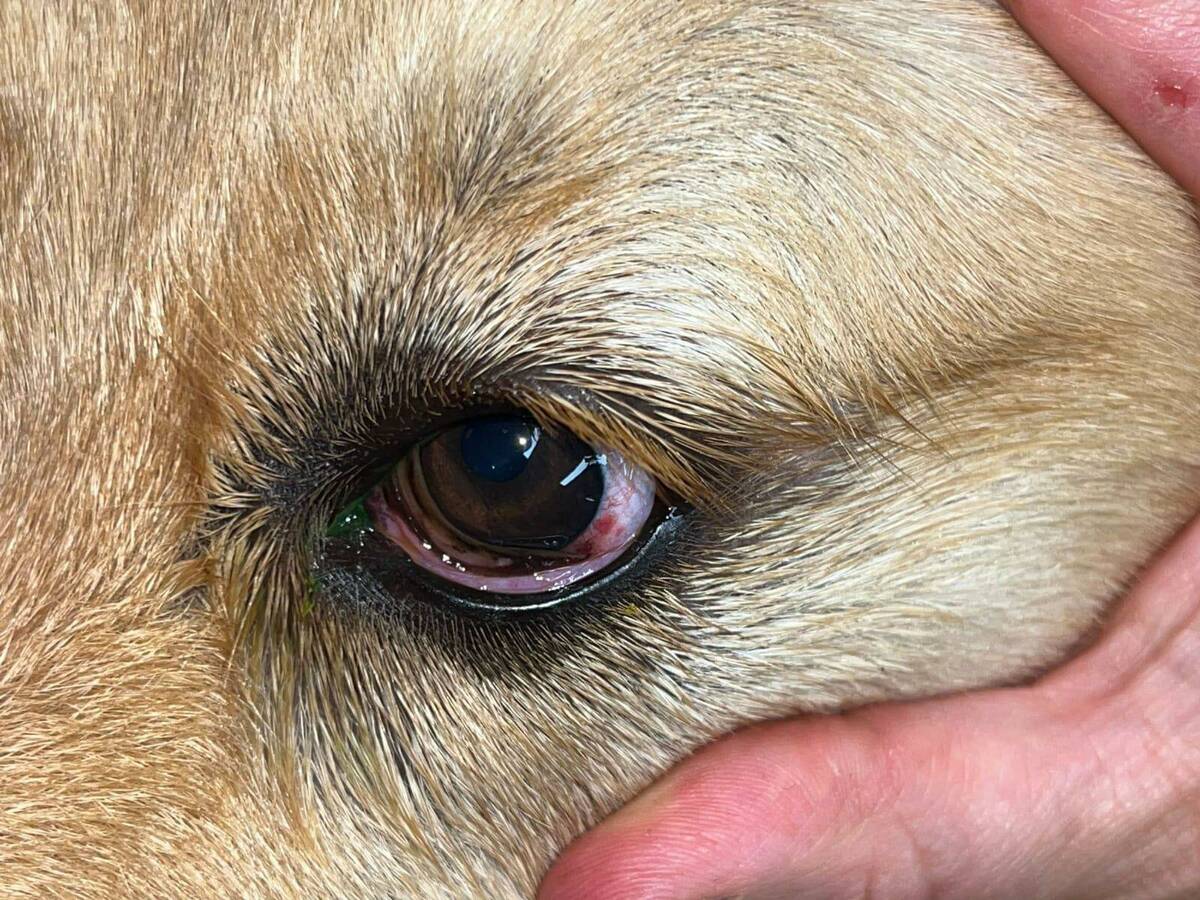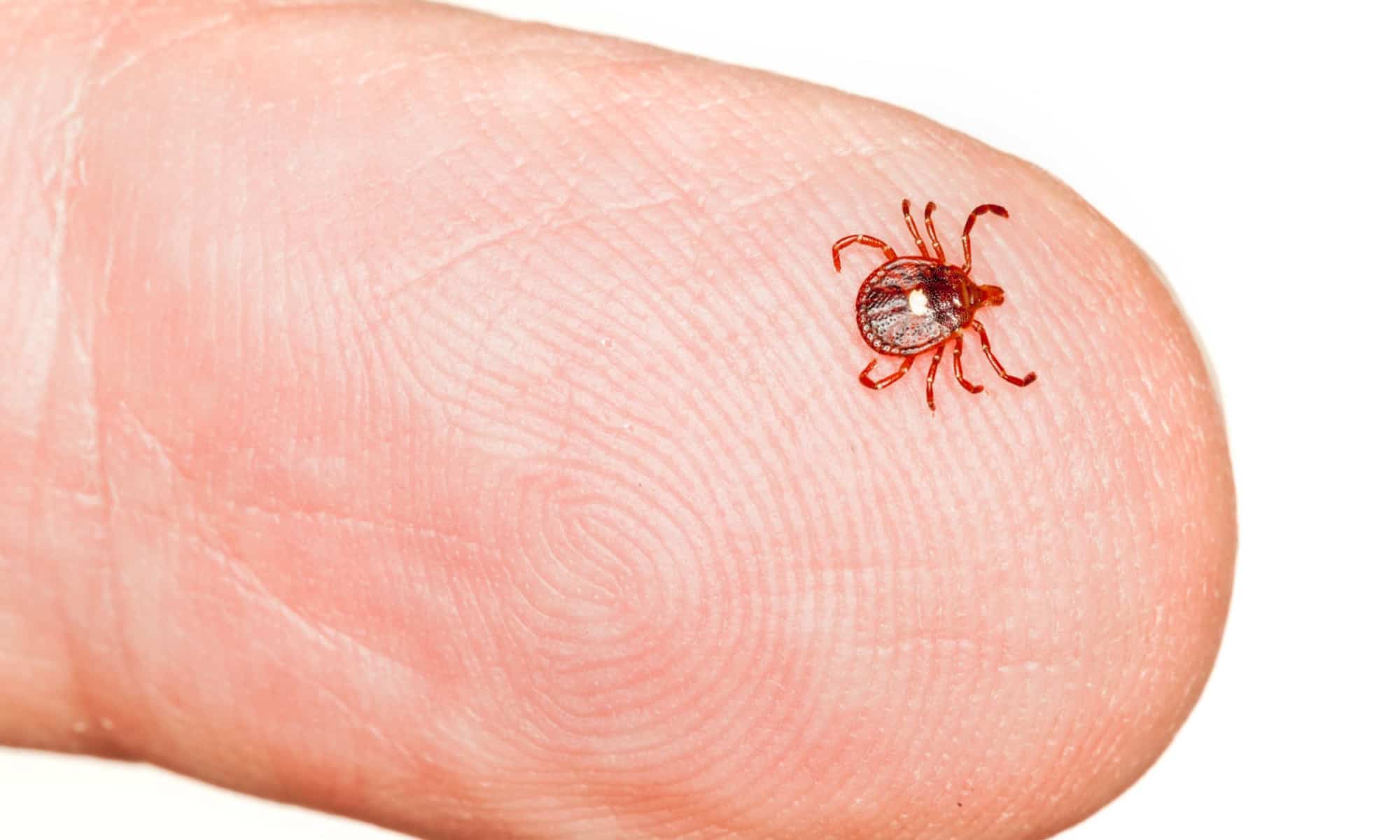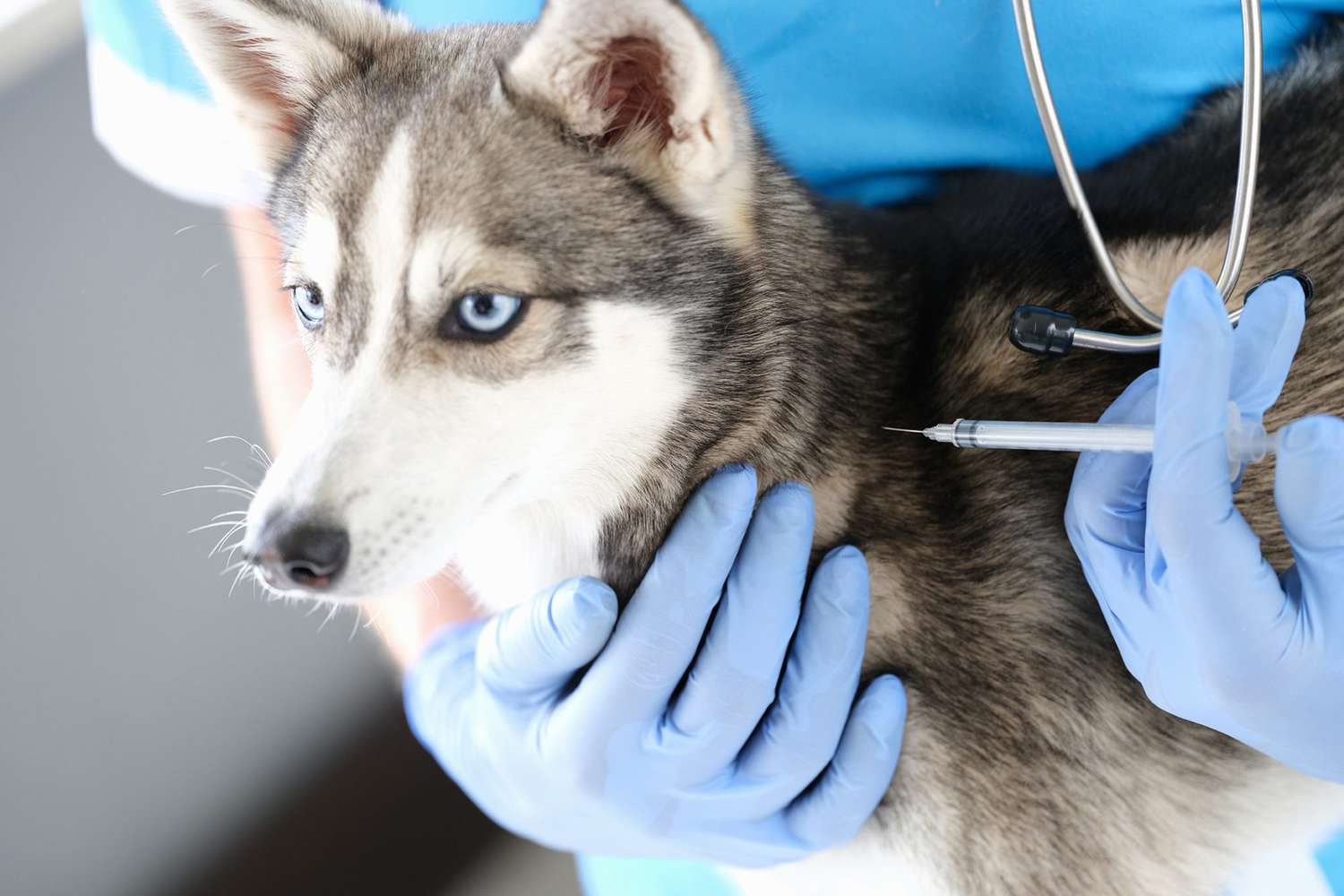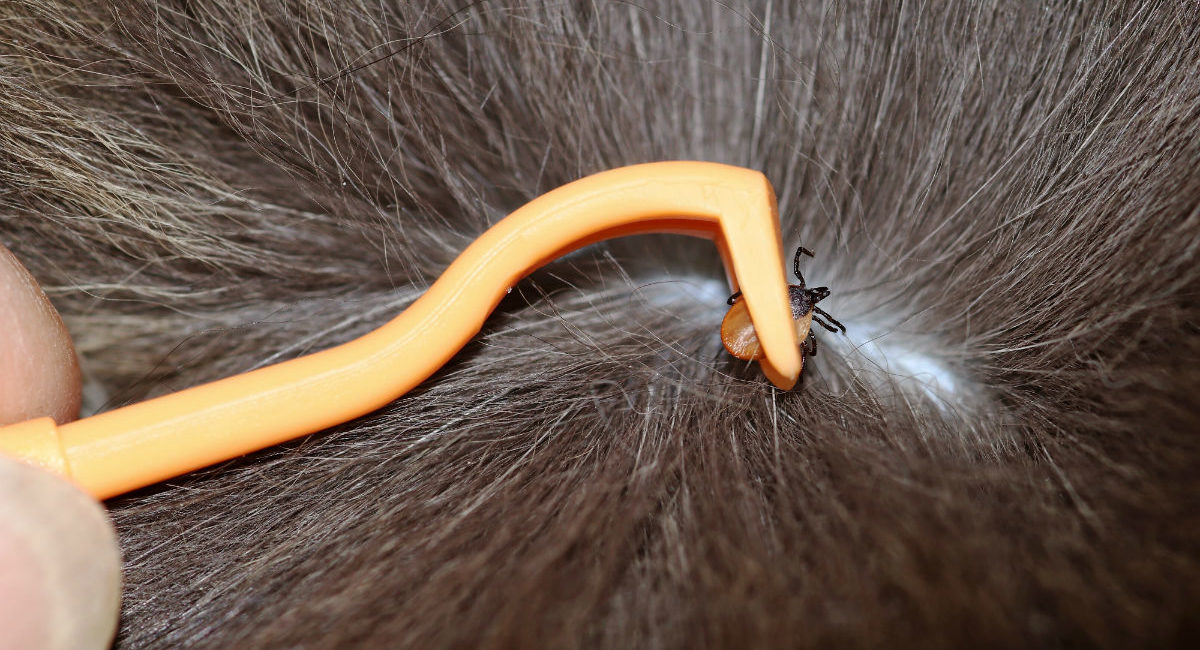Home>Health & Wellness>Common Health Issues>What Happens If You Can’t Get A Tick Out Of A Dog
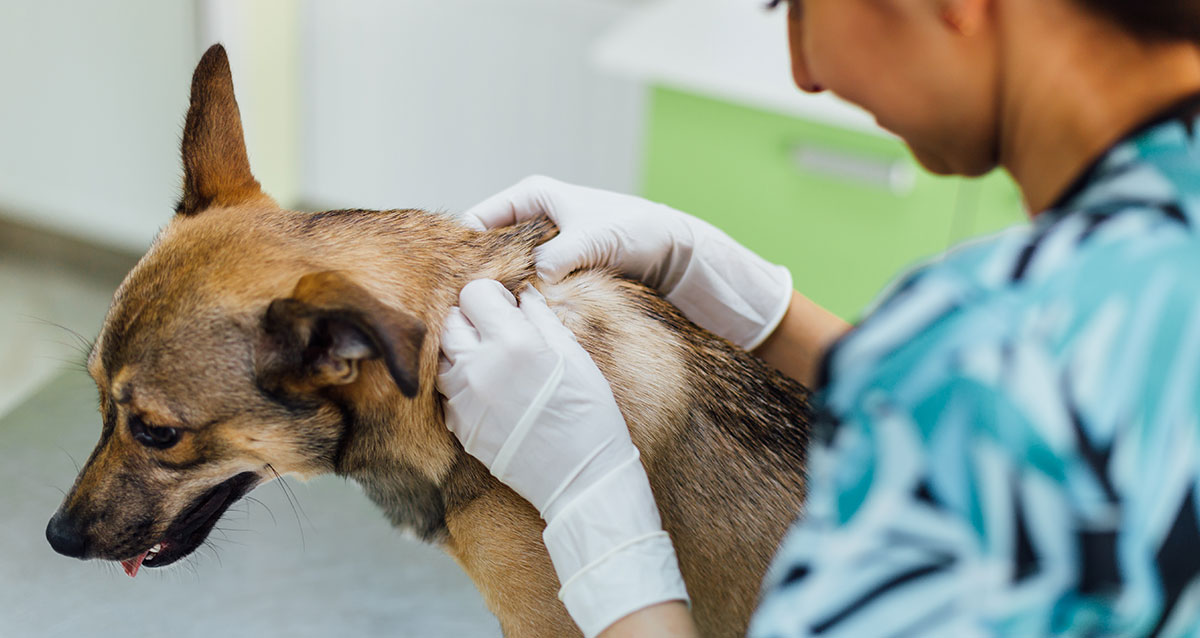

Common Health Issues
What Happens If You Can’t Get A Tick Out Of A Dog
Published: February 5, 2024
Learn how to handle common health issues in dogs, including what to do if you can't remove a tick. Protect your pet's well-being with our expert tips.
(Many of the links in this article redirect to a specific reviewed product. Your purchase of these products through affiliate links helps to generate commission for Pawsomeoldies.com, at no extra cost. Learn more)
Table of Contents
Introduction
Ticks are tiny, blood-sucking parasites that can pose a significant threat to the health and well-being of our canine companions. These pesky creatures are commonly found in outdoor environments, such as wooded areas, tall grass, and shrubs, making it crucial for dog owners to be vigilant in protecting their pets from tick infestations.
When a tick latches onto a dog's skin, it can transmit harmful pathogens, including bacteria, viruses, and parasites, which may lead to various health complications. Therefore, prompt and proper tick removal is essential to minimize the risks associated with tick-borne diseases.
In this article, we will delve into the potential consequences of leaving a tick embedded in a dog's skin, explore effective methods for safely removing ticks, and discuss the steps to take if a tick proves difficult to extract. Additionally, we will highlight the importance of seeking professional assistance for tick removal and provide valuable insights into preventing future tick infestations in dogs.
By gaining a comprehensive understanding of the implications of tick infestations and the necessary measures to address them, dog owners can safeguard their furry friends from the potential harm caused by these persistent parasites. Let's embark on this informative journey to equip ourselves with the knowledge and strategies needed to protect our beloved canine companions from the perils of tick infestations.
Read more: What Happens If You Get Bitten By A Dog Tick
Understanding the risks of leaving a tick in a dog
Leaving a tick embedded in a dog's skin can have detrimental consequences, posing a range of health risks for our canine companions. Ticks are notorious for transmitting a variety of pathogens, including bacteria, viruses, and parasites, which can lead to severe health complications if left untreated. Understanding the potential risks associated with allowing a tick to remain on a dog is crucial for pet owners to grasp the urgency of prompt tick removal.
One of the primary concerns related to leaving a tick in a dog is the potential transmission of tick-borne diseases. Ticks are known vectors for various illnesses, such as Lyme disease, ehrlichiosis, anaplasmosis, and Rocky Mountain spotted fever. These diseases can cause a myriad of symptoms, including fever, lethargy, joint pain, and in severe cases, organ damage. If a tick is left unchecked and continues to feed on a dog's blood, the risk of disease transmission significantly increases, potentially leading to long-term health issues.
Moreover, the longer a tick remains attached to a dog, the higher the likelihood of secondary infections at the bite site. When a tick embeds its mouthparts into a dog's skin to feed on blood, it creates a small wound that can become susceptible to infection. If the tick is not promptly removed, the site of attachment may develop redness, swelling, and tenderness, indicating the onset of a secondary bacterial infection. This can cause discomfort for the dog and may necessitate medical intervention to address the infection and alleviate the associated symptoms.
In addition to the immediate health risks, leaving a tick in a dog can also lead to potential allergic reactions. Some dogs may exhibit hypersensitivity to tick saliva, triggering allergic dermatitis characterized by itching, redness, and skin irritation around the bite area. This can cause considerable discomfort for the dog and may require veterinary attention to manage the allergic reaction and alleviate the associated discomfort.
Furthermore, the presence of an engorged tick on a dog's body can lead to anemia, particularly in smaller or more vulnerable dogs. As ticks feed on blood, they can deplete a dog's red blood cell count, leading to anemia, which manifests as weakness, pale gums, and lethargy. If left unaddressed, severe anemia can pose a life-threatening risk to the dog's health, underscoring the critical importance of timely tick removal.
In essence, the risks of leaving a tick in a dog are multifaceted, encompassing the potential transmission of tick-borne diseases, secondary infections, allergic reactions, and the development of anemia. Understanding these risks underscores the imperative of proactive tick prevention and swift, effective tick removal to safeguard the well-being of our beloved canine companions.
Methods for removing a tick from a dog
When it comes to removing a tick from a dog, it is crucial to approach the process with care and precision to ensure the complete extraction of the parasite while minimizing the risk of potential harm to the dog. Here are several effective methods for safely removing ticks from a dog's skin:
-
Fine-Tipped Tweezers: Utilizing fine-tipped tweezers is a widely recommended method for removing ticks from a dog. To do so, grasp the tick as close to the skin's surface as possible, ensuring a firm grip on the parasite's mouthparts. With steady, gentle pressure, steadily pull the tick straight out, avoiding twisting or jerking motions. This technique helps to prevent the tick's mouthparts from breaking off and remaining embedded in the dog's skin.
-
Tick Removal Tools: Specialized tick removal tools, such as tick twisters or hooks, are designed to effectively and safely extract ticks from a dog's skin. These tools are engineered to grasp the tick at the skin level and facilitate smooth, complete removal without leaving behind any mouthparts. By following the instructions provided with the tool, dog owners can confidently and efficiently remove ticks from their pets.
-
Tick Removal Sprays: Tick removal sprays containing safe and effective ingredients can be applied to the tick to facilitate its detachment from the dog's skin. These sprays work by immobilizing the tick, making it easier to remove. It is important to use tick removal sprays specifically formulated for pets and to follow the product's instructions carefully to ensure safe and successful tick removal.
-
Seeking Veterinary Assistance: In cases where the tick is deeply embedded or if the dog is particularly sensitive or anxious, seeking professional veterinary assistance for tick removal is advisable. Veterinarians have the expertise and specialized tools to safely and effectively remove ticks, minimizing the risk of complications and ensuring the dog's well-being.
Regardless of the method chosen, it is essential to handle the tick removal process with patience and precision. After removing the tick, it is important to disinfect the bite site and monitor the dog for any signs of infection or adverse reactions. By employing these methods for removing ticks from a dog, pet owners can effectively safeguard their furry companions from the potential risks associated with tick infestations.
What to do if you can't get a tick out of a dog
In some instances, despite diligent efforts, a tick may prove challenging to remove from a dog's skin. When faced with this situation, it is essential to remain calm and take appropriate steps to address the issue effectively. Here are the recommended actions to take if you encounter difficulty in extracting a tick from a dog:
1. Assess the Situation
Begin by carefully assessing the tick and the surrounding area on the dog's skin. Ensure that you are working in a well-lit and comfortable environment to minimize stress for both the dog and yourself. Take note of the tick's size, how deeply it is embedded, and whether it is engorged from feeding. This assessment can provide valuable insights into the best approach for safe and successful tick removal.
Read more: What Happens When A Dog Gets Tick Paralysis
2. Avoid Forceful Measures
It is crucial to refrain from using forceful or aggressive methods to remove the tick, as this can increase the risk of leaving behind the tick's mouthparts or causing injury to the dog's skin. Avoid squeezing, crushing, or twisting the tick, as these actions can lead to the release of additional saliva or pathogens into the dog's bloodstream.
3. Apply a Tick Removal Product
Consider using a specialized tick removal product, such as a tick removal gel or spray, to facilitate the detachment of the tick from the dog's skin. These products are designed to immobilize the tick and make it easier to remove. Follow the product's instructions carefully, applying it directly to the tick to aid in its safe extraction.
4. Seek Veterinary Guidance
If the tick remains firmly embedded or if you are uncertain about the best course of action, it is advisable to seek veterinary guidance promptly. Veterinarians possess the expertise and tools necessary to address challenging tick removal situations. They can assess the tick's attachment and employ professional techniques to safely extract the tick without causing distress to the dog.
5. Monitor the Dog
After attempting to remove the tick or seeking veterinary assistance, closely monitor the dog for any signs of discomfort, inflammation, or infection at the tick bite site. Keep a watchful eye on the dog's behavior and overall well-being, as prompt detection of any adverse reactions or complications is crucial for timely intervention.
By following these steps, dog owners can navigate the challenges of tick removal with a focused and informed approach, prioritizing the well-being of their canine companions. It is important to remain patient and attentive throughout the process, ensuring that the dog receives the necessary care and support to address the persistent presence of a tick.
Read more: How To Get An Embedded Tick Out Of A Dog
Seeking professional help for tick removal
In situations where a tick is deeply embedded in a dog's skin, or if attempts to remove the tick at home have proven challenging or unsuccessful, seeking professional veterinary assistance for tick removal is highly advisable. Veterinarians possess the expertise, specialized tools, and experience necessary to address complex tick removal scenarios with precision and care.
When faced with the need for professional help in tick removal, dog owners should promptly contact their veterinarian to schedule an appointment. It is essential to communicate the specific details of the situation, including the size of the tick, the duration of attachment, and any observed changes in the dog's behavior or the tick bite site. Providing this information enables the veterinary team to prepare for the tick removal procedure and prioritize the dog's well-being.
During the veterinary visit, the veterinarian will conduct a thorough assessment of the tick and its attachment to the dog's skin. This evaluation may involve examining the tick's size, level of engorgement, and the potential presence of mouthparts embedded in the skin. Based on this assessment, the veterinarian will determine the most appropriate approach for safe and effective tick removal.
Veterinarians have access to specialized tick removal tools and techniques designed to minimize discomfort for the dog and ensure complete extraction of the tick. These tools may include fine-tipped instruments and magnification devices to enhance precision during the removal process. By leveraging their expertise and resources, veterinarians can navigate challenging tick removal scenarios with skill and proficiency, prioritizing the dog's comfort and safety.
In cases where the tick has caused skin irritation or inflammation, the veterinarian can provide appropriate medical care to address these concerns. This may involve administering anti-inflammatory treatments, applying soothing ointments, or recommending additional measures to promote healing and alleviate any discomfort experienced by the dog.
Furthermore, seeking professional veterinary assistance for tick removal allows for the opportunity to assess the dog's overall health and well-being in relation to the tick infestation. Veterinarians can conduct thorough examinations to check for any signs of tick-borne diseases, secondary infections, or allergic reactions, providing timely intervention if any health issues are identified.
By entrusting the tick removal process to veterinary professionals, dog owners can ensure that their beloved pets receive the highest standard of care and attention. This collaborative approach between pet owners and veterinarians underscores the commitment to safeguarding the health and welfare of dogs, particularly in challenging situations such as difficult tick removal scenarios.
In essence, seeking professional help for tick removal from a dog reflects a proactive and responsible approach to addressing complex tick infestations, prioritizing the dog's well-being and ensuring the effective resolution of the tick-related concerns under the guidance of veterinary expertise.
Preventing future tick infestations in dogs
Preventing future tick infestations in dogs is paramount to safeguarding their health and well-being. Implementing proactive measures to minimize the risk of tick encounters and infestations can significantly reduce the potential for tick-borne diseases and related complications. Here are effective strategies for preventing future tick infestations in dogs:
1. Regular Tick Checks
Consistent and thorough tick checks are essential for detecting and removing ticks before they have the opportunity to attach and feed on a dog's blood. After outdoor activities, particularly in wooded or grassy areas, pet owners should carefully inspect their dogs for any signs of ticks. Paying close attention to areas such as the ears, neck, underarms, and between the toes can help identify ticks at an early stage.
2. Tick Preventive Products
Utilizing veterinarian-recommended tick preventive products, such as spot-on treatments, oral medications, or tick collars, can provide an added layer of defense against tick infestations. These products are designed to repel ticks or eliminate them upon contact, reducing the likelihood of ticks attaching to the dog's skin. It is crucial to follow the recommended application schedule and dosage to ensure the ongoing effectiveness of these preventive measures.
Read more: What Happens If A Tick Bites A Dog
3. Environmental Management
Maintaining a well-groomed and tick-resistant outdoor environment can contribute to reducing the risk of tick infestations. Regularly mowing the lawn, trimming shrubs, and clearing leaf litter can minimize tick habitats in the immediate vicinity of the dog's living space. Additionally, creating physical barriers, such as gravel or wood chip borders, can help deter ticks from encroaching on the dog's outdoor areas.
4. Vaccination Against Tick-Borne Diseases
In regions where specific tick-borne diseases pose a significant threat, veterinarians may recommend vaccinations to provide dogs with immunity against these illnesses. Vaccination can offer an additional layer of protection, reducing the severity of potential infections if a dog is exposed to disease-carrying ticks.
5. Education and Awareness
Educating pet owners about the risks of tick infestations and the importance of preventive measures is crucial for promoting proactive tick control. Providing information on the signs of tick-borne diseases, the proper use of preventive products, and the significance of regular tick checks empowers dog owners to take proactive steps in protecting their pets from tick-related health risks.
By integrating these preventive strategies into a comprehensive tick control plan, dog owners can effectively minimize the risk of future tick infestations and mitigate the potential health threats posed by ticks. This proactive approach not only safeguards the well-being of dogs but also fosters a safe and enjoyable environment for canine companions to thrive in.

